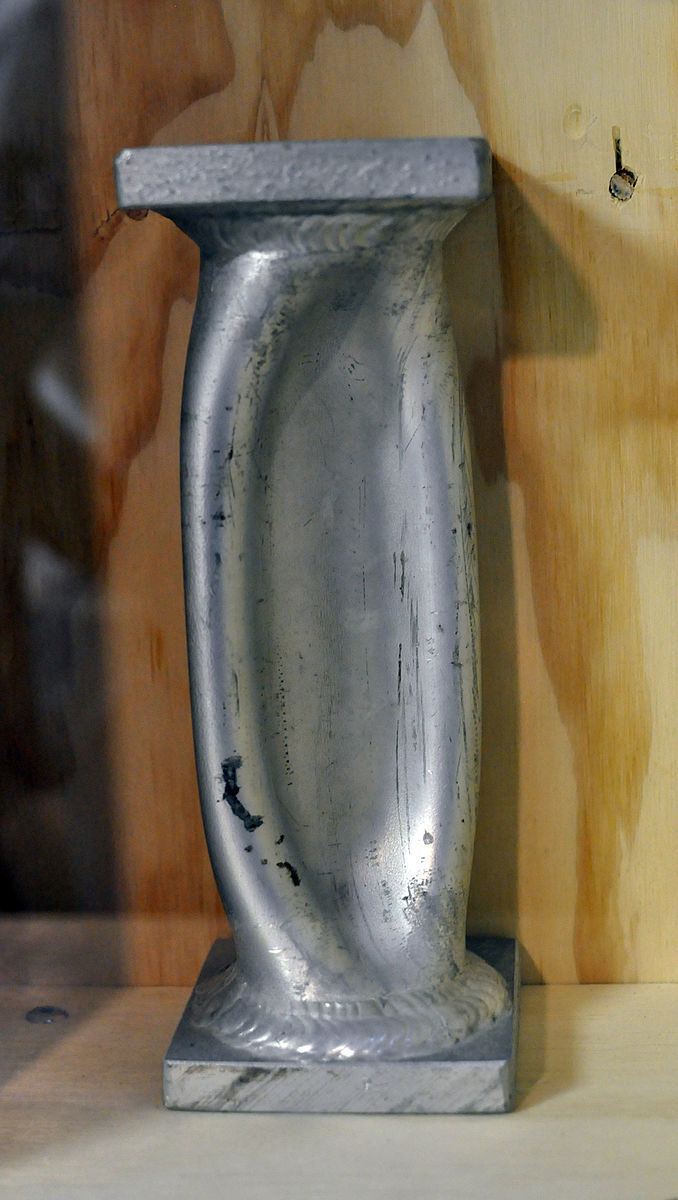 | ||
The bar is a metric unit of pressure, but is not approved as part of the International System of Units (SI). It is defined as exactly equal to 7005100000000000000♠100000 Pa, which is slightly less than the current average atmospheric pressure on Earth at sea level.
Contents
The bar and the millibar were introduced by the Norwegian meteorologist Vilhelm Bjerknes, who was a founder of the modern practice of weather forecasting.
Use of the bar is deprecated by some professional bodies in some fields. The International Bureau of Weights and Measures (BIPM) lists the bar as one of the "non-SI units [that authors] should have the freedom to use", but declines to include it among the "Non-SI units accepted for use with the SI". The US National Institute of Standards and Technology (NIST) deprecates its use except for "limited use in metrology" and lists it as one of several units that "must not be introduced in fields where they are not presently used". The International Astronomical Union (IAU) also lists it under "Non-SI units and symbols whose continued use is deprecated". As of 2004, the bar is legally recognized in countries of the European Union.
Units derived from the bar include the megabar (symbol: Mbar), kilobar (symbol: kbar), decibar (symbol: dbar), centibar (symbol: cbar), and millibar (symbol: mbar or mb). The notation bar(g), though deprecated by various bodies, represents gauge pressure, i.e., pressure in bars above ambient or atmospheric pressure.
Definition and conversion
The bar is defined using the SI derived unit, pascal: 7005100000000000000♠1 bar ≡ 7005100000000000000♠100000 Pa.
Thus, 7005100000000000000♠1 bar is equal to:
and 1 bar is approximately equal to:
Notes:
Origin
The word bar has its origin in the Greek word βάρος (baros), meaning weight. The unit's official symbol is bar; the earlier symbol b is now deprecated and conflicts with the use of b denoting the unit barn, but it is still encountered, especially as mb (rather than the proper mbar) to denote the millibar. Between 1793 and 1795, the word bar was used for a unit of weight in an early version of the metric system.
Usage
Atmospheric air pressure is often given in millibars where standard sea level pressure is defined as 7005101300000000000♠1013 mbar, 101.3 (kPa), 1.013 bar, which is about 14.7 Pounds per square inch (PSI). Despite the millibar not being an SI unit, meteorologists and weather reporters worldwide have long measured air pressure in millibars as the values are convenient. After the advent of SI units, some meteorologists began using hectopascals (symbol hPa) which are numerically equivalent to millibars; for the same reason, the hectopascal is now the standard unit used to express barometric pressures in aviation in most countries. For example, the weather office of Environment Canada uses kilopascals and hectopascals on their weather maps. In contrast, Americans are familiar with the use of the millibar in US reports of hurricanes and other cyclonic storms.
In fresh water, there is an approximate numerical equivalence between the change in pressure in decibars and the change in depth from the water surface in metres. Specifically, an increase of 1 decibar occurs for every 1.019716 m increase in depth. In sea water with respect to the gravity variation, the latitude and the geopotential anomaly the pressure can be converted into meters depth according to an empirical formula (UNESCO Tech. Paper 44, p. 25). As a result, decibars are commonly used in oceanography.
Many engineers worldwide use the bar as a unit of pressure because, in much of their work, using pascals would involve using very large numbers.
In the automotive field, turbocharger boost is often described in bars outside the USA).
Unicode has characters for "mb" (㏔, U+33D4) and "bar" (㍴, U+3374), but they exist only for compatibility with legacy Asian encodings and are not intended to be used in new documents.
The kilobar, equivalent to 100 MPa, is commonly used in geological systems, particularly in experimental petrology.
"Bar(a)" and "bara" are sometimes used to indicate absolute pressures and "bar(g)" and "barg" for gauge pressures. This usage is deprecated and fuller descriptions such as "gauge pressure of 2 bar" or "2 bar gauge" are recommended.
